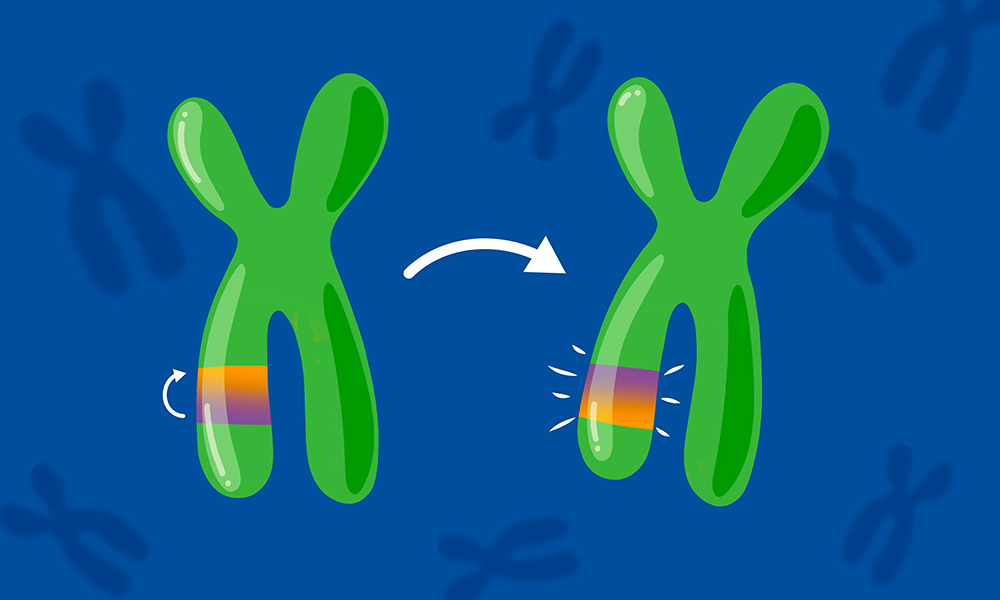Recurrent inversion polymorphisms in humans associate with genetic instability and genomic disorders
Cell 6 May 2022
10.1016/j.cell.2022.04.017
Researchers at EMBL Heidelberg found that inversions in the human genome are more common than previously thought, which impacts our understanding of certain genetic diseases.

Our DNA acts like a blueprint for the cellular machinery that lets cells, organs, and whole organisms function. Mutations in the DNA can result in genetic diseases. Such genetic variation can include point mutations at a single site, as well as deletions, duplications, and inversions.
The term ‘inversion’ describes a piece of DNA flipping its orientation in the genome. Inversions are poorly understood because they are more difficult to analyse than other types of mutations. Scientists at EMBL Heidelberg, in collaboration with scientists at the University of Washington, USA, and Heinrich Heine University Düsseldorf, Germany, have now shown that inversions are one of the most common mutational processes in humans.
The researchers uncovered how inversions are formed and investigated in detail a set of 40 inversions that form recurrently in the genome, where the DNA sequence flips back and forth. These ‘flip-flopping’ inversions typically lie in regions linked to the development of certain human diseases called genomic disorders.
“We found that inversions form at a much higher rate than previously thought. In humans, at least 0.6% of the genome repeatedly changes direction, making inversion one of the fastest mutational processes in humans,” said Jan Korbel, EMBL Senior Scientist and Head of Data Science. “At these sites, the genome is not stable – the direction of the DNA code continues to switch back and forth.”
Many important human genes lie within these unstable regions. For scientists, this means they must consider this flipping behaviour of genomic regions when they study aspects such as long-distance gene regulation or epigenetics.
Inversions are also relevant for the development of human diseases, such as developmental delays in children or neuropsychiatric disorders in adults. “Despite their importance, these regions have been very difficult to study before because of their complexity. Showing that these inversions indeed flip-flop back and forth required a new set of computational methods,” said Tobias Marschall, Director of the Institute of Medical Biometry and Bioinformatics and the Heinrich Heine University Düsseldorf. “We can now provide human geneticists with a new tool to understand the origin of disease in their patients.”
Evan Eichler, group leader at the University of Washington, said: “We showed for the first time that inversions can be associated with rare genomic rearrangements found in paediatric autism, developmental delay and epilepsy. The question now is why? We hypothesize that certain configurations at the flanks of the inversions either predispose or protect individuals and their offspring from disease-associated rearrangements. This could have a practical application in the clinic, where it could be used to identify families at risk for developing these disorders.”
Cell 6 May 2022
10.1016/j.cell.2022.04.017